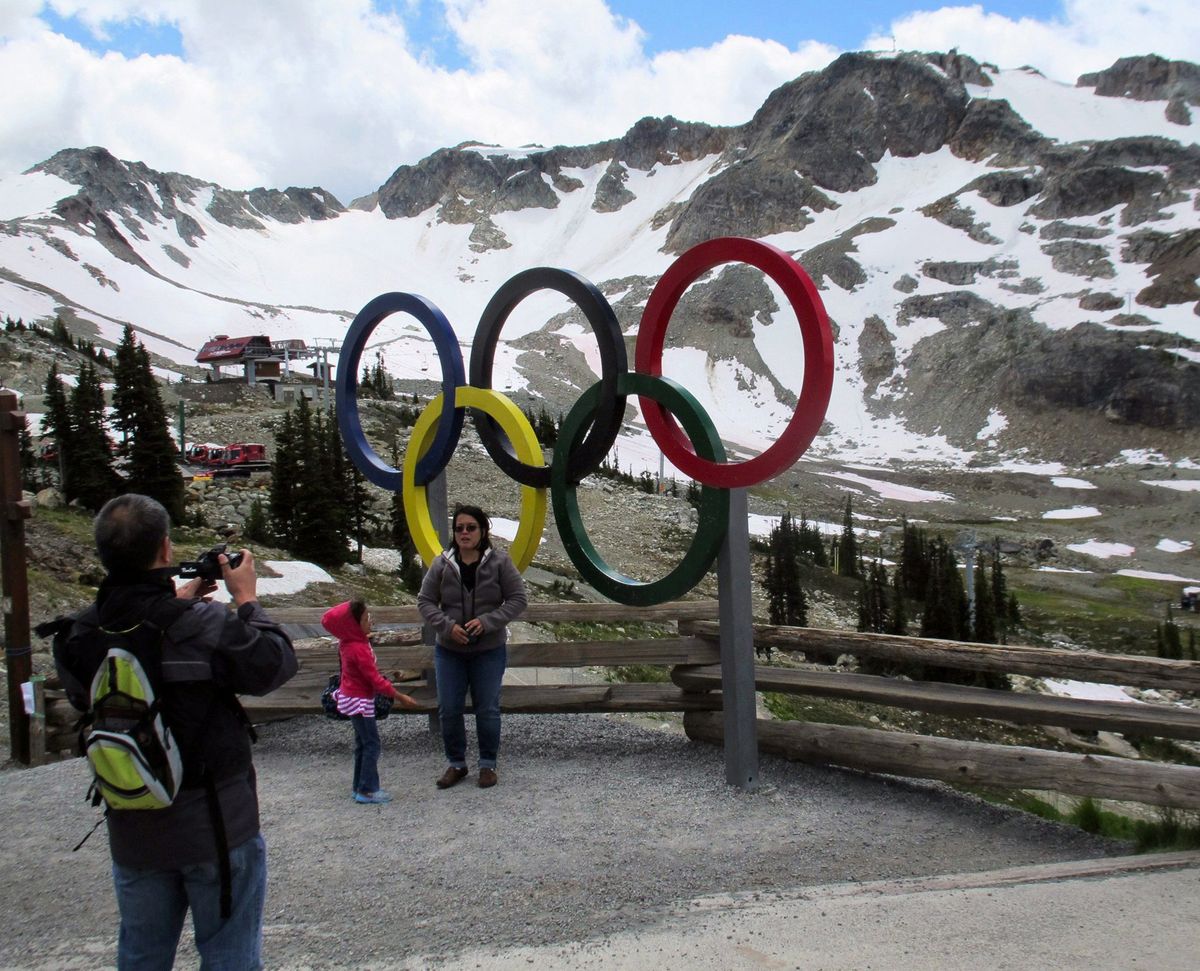Known for skiing, Whistler becoming popular summer destination

Summertime, and the biking and hiking are easy at Whistler.
The British Columbia resort, known for its world-class skiing, has also turned itself into a popular summer resort. Visitors can ride lifts that swoop up to more than 7,000 feet, giving spectacular mountain views and easy access to high-country hiking trails. Down in the valley, the 24-mile paved Valley Trail (for bicyclists, walkers, joggers and roller-bladers) makes for easygoing pedaling through parkland and forests, along a string of small lakes, and past envy-inducing vacation homes.
Of course, Whistler summertime visitors could go hard-core with thigh-burning, tough hikes in the backcountry and strenuous mountain-biking on dirt trails.
But these more mellow biking and hiking options suit people of all ages and stamina, from preschoolers to elders. And at the end of the day, visitors can settle down in Whistler’s comfortable hotels or condos; enjoy good restaurants and shopping; or just people-watch and stroll in the pedestrian-friendly Whistler Village.
On a sparkling summer afternoon, I set off on a rented bike for a mostly level 10-mile loop on part of Whistler’s Valley Trail (plus some gravel bike paths that link to the trail).
I just wish I’d taken my bathing suit.
Starting from Whistler Village, I cruised along the path to Lost Lake, a teardrop lake tucked into a forested park just a 10-minute ride away. Dozens of people were splashing in the water at a little beach on the hot, sunny day; there was even a separate swimming beach for dogs since almost everyone at Whistler seems to have a canine family member.
The main biking/walking routes at Lost Lake are gravel, but well-maintained and easy to ride. (There’s also a web of miles of narrower, steeper gravel trails around Lost Lake for those who want to play around on their bikes.)
Moseying onward, I scooted along the paved Valley Trail with a handful of other bicyclists. Soon we hit Green Lake, one of a string of small lakes in the narrow Whistler Valley, where the trail runs along a block-long boardwalk and past some lavish stone-and-timber homes (yes, I want one). Ducks drifted by the lakeshore’s verdant rushes; fishermen in waders cast for trout; canoeists paddled serenely past.
The scenery kept getting better. I stopped to picnic along the peaceful shores of the River of Golden Dreams, a suitable name for a three-mile-long, burbling bucolic stream that the Valley Trail skirts. People floated gaily past in little rubber rafts and kayaks. Whistler and Blackcomb mountains rose steeply across the valley, the ski runs carved out of their forests looking like dozens of vertical fairways.
After drinking in the views, I pedaled to my last stop, the sparkling 1.5-mile-long Alta Lake. At Rainbow Park, a stretch of lawn and sandy swimming beach along the lake, couples sprawled on the grass; admirably fit 20-somethings played volleyball; and families swam in the sun-warmed water (again, I wished for my bathing suit).The enticing aroma of barbecued chicken wafted through the air. Hungry, I pedaled a few miles back to Whistler Village for a sushi dinner and a good night’s sleep, the perfect end to a gentle biking day.
The next day, I headed for the high hills. Two long lifts – a gondola (with enclosed cabins) and an open-air chairlift – carried me about 5,000 feet up from the village to the rugged, rocky 7,156-foot summit of Whistler Mountain.
It felt like the scenic top of the world, with a 360-degree panorama of glacier-draped peaks, vast forests and the valley far, far below.
Sightseers, mountain bikers and hikers (and trail runners) can ride lifts up either Whistler and Blackcomb in summer. Or do both in a day since the swooping Peak 2 Peak gondola links Whistler and Blackcomb at midmountain stations. The Peak 2 Peak is an extraordinary ride: a two-mile ride with gondola cabins dangling a dizzying 1,430 feet above the valley floor; there’s even a glass-bottomed gondola cabin for the intrepid. At midmountain you’ll also find restaurants, cafes, restrooms and shops – for that extra fleece you might need since it can be cold on high.
Hiking trails radiate from the top of the lifts. Take a 15-minute stroll, such as the interpretive loop walk at the Whistler summit, with signs telling of natural and cultural history. Or take a longer hike to get away from the ski-area infrastructure and the weekend flocks of mountain sightseers.
On Whistler, the High Note trail is one of the best for getting away from it all, said Arthur DeJong, Whistler-Blackcomb’s planning/environmental manager. It’s a 5.8-mile (round-trip) high-country trail through alpine meadows with wide-open views, including a look at Black Tusk, a massive, chimney-like volcanic spire.
DeJong, who began working at Whistler 33 years ago when the administration office was just a trailer, said the Lakeside and Decker loops on Blackcomb Mountain are among his favorite trails.
You could make a shorter walk or a full day with those Blackcomb loops, lingering by an alpine lake or in wildflower meadows. Or just stopping to enjoy the views of craggy peaks.
It’s high-country hiking made easier, thanks to the lifts. So lace up your boots, take a ride, and get walking.